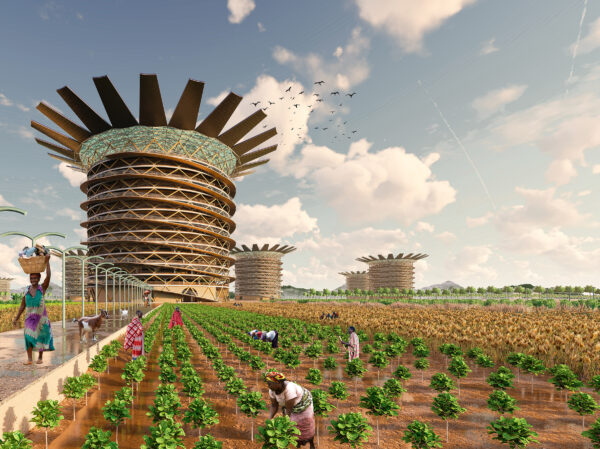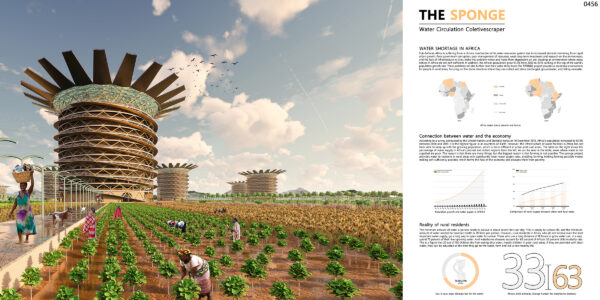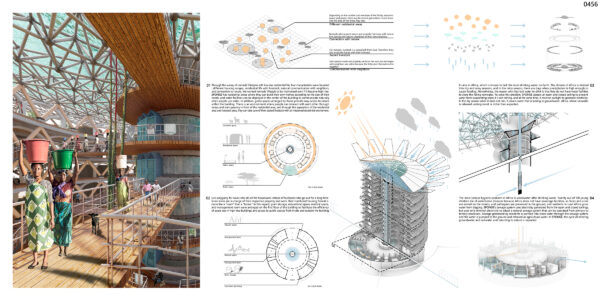Honorable Mention
2021 Skyscraper Competition
Lee Jae Uk, Kim Ji Hoo
South Korea
Water shortage
The African government has invested heavily in education, agriculture, and medical facilities for the development of the country, but has not been able to produce clear results. Increasing demand due to rapid urban growth resulted in the overabundance of the water resources system, and poor management of resources, weak long-term investment and research on the environment, and a lack of infrastructure led to many natives’ dependence on relief.
Ironically, the average annual precipitation in Africa results in average annual rainfall of 1,000 to 2,000 mm. Nevertheless, the reason why water is always suffering from a lack of water supply facilities infrastructure to collect and store rainwater. The climate of Africa is divided into dry and rainy seasons. In the rainy season, there is a lot of rain to flood, but this rain is not used and flows into the groundwater.
The minimum amount of water a person needs to survive is 7 liters per day. Urban areas with water facilities can easily be supplied with water, but Africans in rural areas who do not receive a minimum supply of water spend 16 hours a day growing water, and they will never dream of agricultural water. Lack of drinking water and agricultural water worsened their health.
Lack of water and sewage treatment facilities
In Africa, where sewage treatment facilities are not available, people solve feces and urine on the streets and it seeps into the ground. pathogens are preserved on the ground. One way for Africans to get water is to grow contaminated water from digging. This water also worsens their health.
Sponge
The Sponge is a water circulation collection housing for residents in rural areas who can use groundwater due to discharge and collect rainwater in rainy seasons.
Water Circulation
Opening and closing ceilings can be adopted for dome-type roofs to collect rainwater, and to prevent the evaporation of stored water when it is not raining, the ceiling can be closed while receiving sunlight to generate electricity. The electricity gathered like this is used to raise groundwater for non-rainy dry seasons.
Final Purpose
If the Sponge project provides water infrastructure, it will be able to use the time spent on farming, growing water, as well as people’s health, to live a self-sufficient life without the help of international organizations. Also, the future of Africa will brighten as children can take classes at school.
Residential style
The Sponge project is a water circulation housing with water and sewage facilities, but their homes can be built using the traditional housing methods they have gained from their long experience. We just provide a residential space with clean water.
Tribes live in houses made from branches and cow dung that are easily found in nature, and they have to repair their homes every day due to rain and wind. The Sponge relieves these worries and helps them settle down.

















